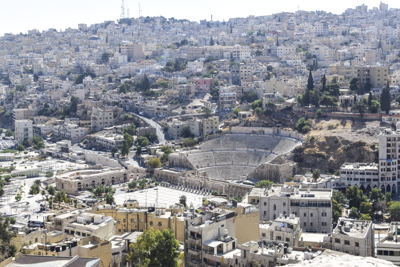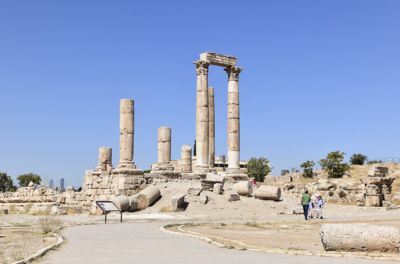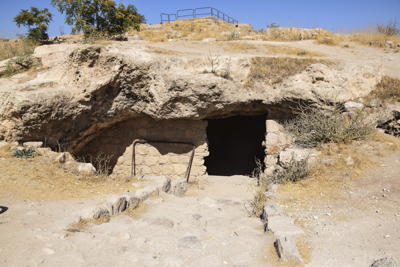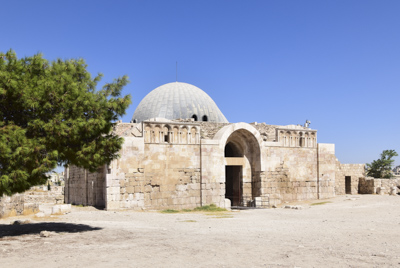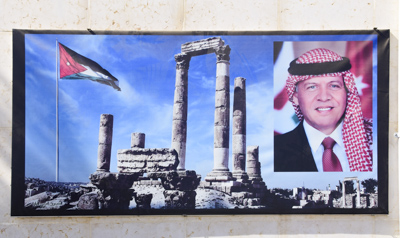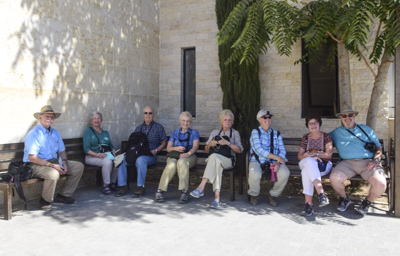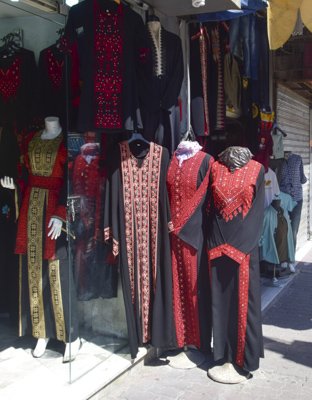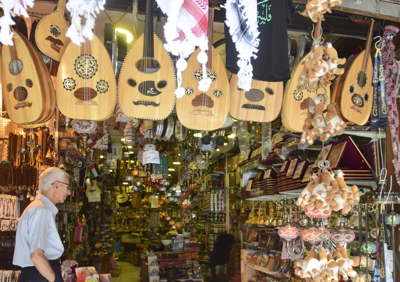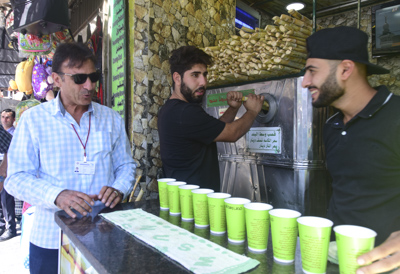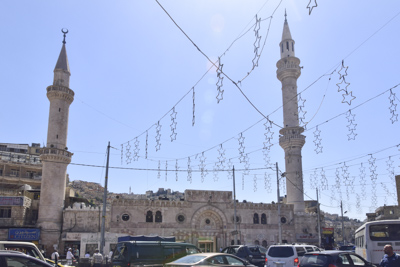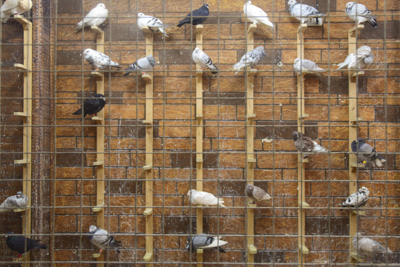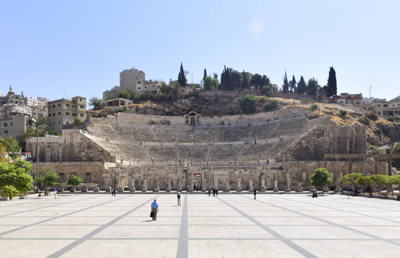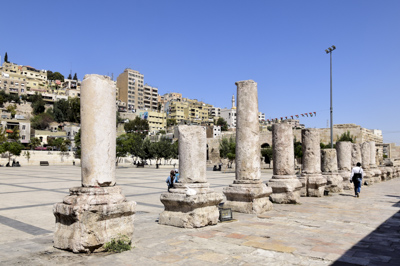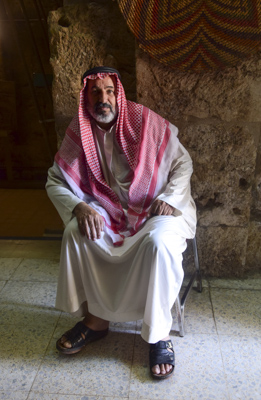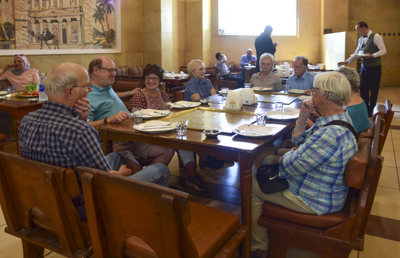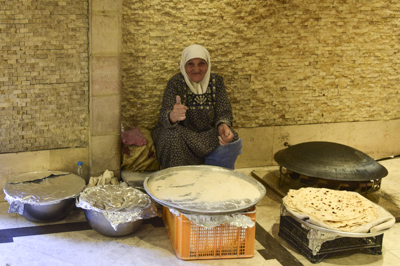Wednesday – September 27, 2017
Today was our day to explore Amman. It’s an ancient city which has grown to become a blend of old traditions and modern advances. One contemporary feature is the heavy traffic which clogs all the streets, so driving through the city takes a long time.
We met our Tourist Department Guard, Hady. Mohammad said not to worry this was a relatively new law that all tour groups had to have a uniformed armed guard for extra security. Hady was a shy young man who had a pleasant smile and carried a hand gun. I wasn’t sure if I felt more secure with Hady’s presence, but it was certainly handy to have him with us when we tried to cross streets because there were no crosswalks or traffic lights. Hady stepped out into heavy traffic, put up his hand, and the cars stopped to let us cross.
Our tour group met after breakfast and we boarded the van to take us to The Amman Citadel. This is an important historical site located on one of the seven mountains of ancient Amman. The Citadel is considered to be among the world’s oldest continuously inhabited places. The Temple of Hercules in the photo below, was built about 166 AD.
Today, the Citadel is a large complex of ancient Roman, Greek, Byzantine, and Islamic ruins built during the last two thousand years. Nearby is an early Bronze Age cave which dates to the 23rd century BC. It was re-used as a burial chamber 4000 years ago.
The Umayyad Palace was built during the early 8th century and later used as a Byzantine church:
A small museum displayed items found at the site. We had time to explore the grounds on our own and visit the museum. We marveled at a large group of elementary school students who were verbally communicating in English but writing in Arabic.
The sign above greeted us at the entrance to the Citadel. It shows King Hussein’s son Abdullah II who is the current King of the Hashemite Kingdom of Jordan.
Members of the OAT tour group resting in the shade at The Citadel:
Afterwards, we drove to the old quarter of Amman and walked along busy sidewalks to see small shops and businesses. Mohammad explained some cultural sights as we negotiated crowded streets.
We stopped for a cool sugar cane drink. It was hard to imagine sugar cane growing in the desert climate. The young man in the middle of the photo pushed dried canes into a noisy machine and the other man filled our cups with sweet water.
We went into a shop that sold exotic pet pigeons for very high prices:
Then we drove to the famous Roman amphitheater which dates to the 2nd century when the city was known as Philadelphia. It’s an impressive 6000 seat theater located in the heart of downtown Amman. Two small museums were located on opposite sides of the arena: the Amman Folklore Museum and the Museum of Popular Traditions. Exhibits of traditional Jordanian life were on display.
Afterwards, we went to a very nice restaurant called Tawaheen al Hawa for lunch and had delicious Jordanian Middle Eastern food: hummus, babaganoush, salads, yogurt, 3 kinds of kebabs, rice, etc.
An elderly woman sat in the lobby of the restaurant and demonstrated how to make the thin bread Armenians call lavash.
We returned to the hotel to rest up for a couple of hours before going out to a Jordanian family’s house for dinner. They were a kind and generous couple who had four young children. We enjoyed a delicious traditional one-pot chicken and rice dinner with them.
Today was a very full and busy day! We saw many new things and learned so much about Jordanian culture!

